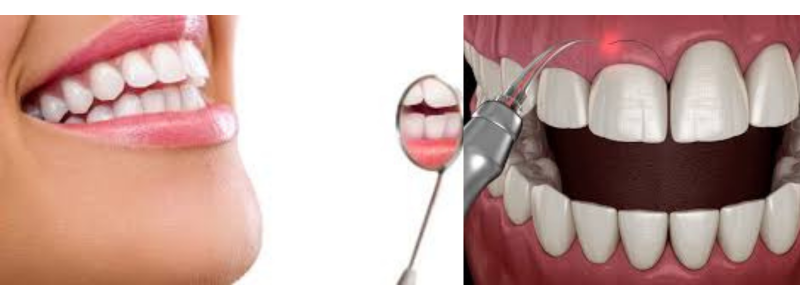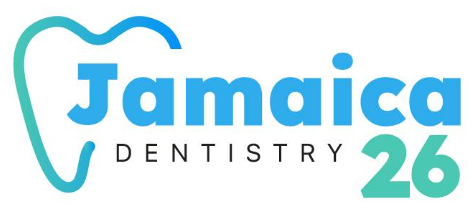Cosmetic Contouring

Discover the Benefits of Cosmetic Contouring for Face and Teeth
Cosmetic contouring is becoming popular in the US today where the majority of Americans are increasingly resorting to cosmetic contouring to improve their faces or dental structures to boost their morale and self knowledge. It can be as simple as contouring of teeth to fix jagged teeth or contouring of facial features using non-surgical fillers, but just like any other type of beauty, it is subtle yet effective in accordance with contemporary ideals of beauty.
Working people, a trim smile or chiseled face shape will make a memorable impression especially in a social, business or media-oriented world. With the ever- growing popularity of non-invasive cosmetic procedures in the United States more people are willing to find quick, cheap, and safe options to fix minor flaws, such as contouring.
Cosmetic Contouring has proven to be a viable solution for anyone wishing to rejuvenate their appearance, but without making major changes with few downtimes and relatively unmarked changes in appearance. It does not indicate vanity, but rather an increasing trend amongst Americans to ensure that they appear and feel the best in an aggressive and beautiful pre-occupied society.
Jamaica 26 Dentistry is here to help meet this need by providing high quality personalized cosmetic and contouring treatment that ensures a patient acquires a beautiful and confident smile.
What is Cosmetic Contouring?
Cosmetic contouring refers to minimally invasive cosmetic practice which attempts to improve natural design and harmony of anatomical or oral features. Medically, it involves strategic redesigning of either hard or soft tissues by either reducing, augmenting or carving out certain regions, all to enhance the overall appearance. Two major varieties exist, facial contouring and dental (tooth) contouring. Facial shaping generally uses dermal fillers, neurotoxins (such as Botox), or surgery to reshape elements of the face, including the jawline, chin, nose, or cheeks and is usually applied to fix asymmetry or the decrease of volume caused by aging.
Enameloplasty (also called dental contouring) is the procedure of refining the enamel where small problems can be corrected, such as chips, crooked or overlapped teeth, to enhance the form and functionality of the teeth. Such procedures can be described as non-invasive or minimally invasive, with minimal or no recovery time. These economical procedures are offered by Jamaica 26 Dentistry, and they are carried out by our team of the best professionals who do not aim at providing anything artificial but rather a safe and natural result.
Types of Cosmetic Contouring Procedures
There are two primary types of cosmetic contouring, namely, tooth contouring (enameloplasty) and that of the face. These two procedures are meant to improve the appearance of less invasive methods with a natural result and minimal to no downtime.
Tooth Contouring (Enameloplasty)
Tooth contouring or enameloplasty is a relatively simple dental cosmetic procedure, where minor imperfections in the appearance of the teeth are fixed by reshaping the tooth enamel. This could consist of eliminating ragged edges, leveling slightly jagged teeth, or lessening minute overlapping. The dentist addresses the problem by using special equipment to carefully grind off small grains of enamel without touching the interior of the tooth.
The positive aspects of tooth contouring are the increased uniformity and attractiveness of the smile as well as better bite alignment and a quick noticeable improvement. The process is rapid, painless and requires no medication.
Ideal patients would be those with good teeth who want to fix some small, cosmetic, flaws, not complete structural aberrations or decay.
Facial Contouring
Facial contouring applies procedures aimed at defining and enhancing facial features either through non-surgical procedures or surgical means. Among the non-invasive procedures, the use of dermal fillers to replace lost volume in the cheeks and lips and Botox to relax specific muscles are especially common in the jaw and forehead. These procedures assist in creating a softer younger face.
Surgical procedures like chin implants, nose jobs or jaw contouring can be sought in cases where the outcome needs to be permanent.
The cheeks, chin, jawline, and nose are common target sites for facial contouring. The procedures are commonly augmented with complementary procedures such as skin tightening or lip enhancement, in order to give a balanced and symmetrical facial rejuvenation.
Medical Cosmetic contouring provides tailored interventions to patients who want to achieve minimal but meaningful enhancements to their facial or dental features.
Benefits of Cosmetic Contouring
Cosmetic contouring has numerous advantages for people who want to improve their appearance in a non-invasive, safe and successful manner. Perhaps one of the greatest benefits is being able to improve natural beauty without making severe changes to a person.
It is not a matter of simply covering up flaws in the teeth, or correcting blemishes on the face; instead, refining and emphasizing what is present normally leads to a more balanced and proportional appearance as a result of cosmetic contouring. This natural augmentation results in a truly perceptible improvement, but there is not so-called overdone appearance that more invasive procedures tend to achieve.
The other significant gain is an increase in confidence and self-esteem that patients tend to have following treatment. Minor aesthetic imperfections, including irregular teeth, poor chin or definition of the face, can be remedied with a psychological effect, making people more comfortable and confident in their interactions with others be it in work or personal life.
Another advantage of cosmetic contouring is it is immediate and subtle. Outcomes are immediately visible after the procedure in the majority of cases, such as with tooth shaping or injectable facial fillers. Such results are usually sculpted and natural looking and will suit patients that desire a noticeable but not a stunning change.
Moreover, the majority of cosmetic contouring is performed with minimal or no downtime, such as non-surgical procedures, including dental enameloplasty, Botox, or dermal fillers. After treatment, patients are able to resume their normal lives right away, which is a convenient choice for patients with busy schedules. Additionally, they are quite attractive due to the low risk of complications and short recovery time.
Completely, cosmetic contouring offers a feasible alternative to people that are concerned with looking new and polished, and the benefits are aesthetic and with little interference with everyday life. It unites aesthetics, practicality, and understated change into something easily accessible.
What to Expect During Cosmetic Contouring Procedure
When it comes to cosmetic contouring, there is a step-by-step process, which can help you feel more confident and prepared. Expect the following:
Initial Consultation
- A dentist or aesthetic specialist will carry out a detailed evaluation.
- The provider assesses dental or facial structure, goals, and history.
- Planning the contouring procedure can be done through digital imaging or scanning.
- Individualized treatment is elaborated to achieve the desired results.
Treatment Steps
For Dental Contouring (Enameloplasty)
- The teeth are washed and checked.
- Filling or polishing with a dental drill or laser is used to remove small portions of enamel.
- The teeth are modeled to standardize slight gaps such as chip-offs, overlaps, or wonky edges.
- The treatment is mostly painless and without anesthesia.
For Facial Contouring
- The skin is also washed and the marking is accurate.
- The injections (Botox or dermal fillers) are applied to key areas, including the cheeks, chin, or jawline.
- In surgical contouring, anesthesia is administered and limited incisions are made to externalize bone by reshaping or embedding implants.
Duration, Recovery, and Aftercare
- Dental contouring takes about 30-60 minutes and does not require any downtime.
- Non-surgical facial procedures (such as fillers or Botox) last 15-45 minutes, and may cause mild swelling or bruising.
- Facial contouring via surgery can last 1 to 3 hours and recovery can be several days to weeks.
- Aftercare involves not putting pressure on treated regions, drinking water, and adhering to instructions from a provider.
- In non-surgical cases, results are visible much faster, but in surgical treatments, results might not be as obvious early enough.
Risks and Considerations
These are the risk factors, and considerations of cosmetic contouring that patients ought to be informed about prior to the procedure:
Cosmetic contouring usually causes sensitivity or swelling that is temporary, particularly around the area that is treated. In dental contouring, there is a chance of tooth sensitivity to hot or cold and in facial contouring there might be mild bruising, redness and swelling that should have gone off in the next few days.
Rare complications may include over-contouring, infection (in a surgical instance), allergic responses to fillers or anesthetics, and asymmetry in case of improper application. The tooth enamel or foundation facial tissues may also be harmed due to improper technique.
It is essential to select an experienced professional to reduce the risk and optimal outcomes. It is always advisable to choose a licensed dentist or a certified aesthetic practitioner that has practiced cosmetic contouring before. With a before-and-after review, credentials verification, and a detailed conversation on the procedure during the consultation, the process can become safe and satisfying.
FAQs
Is cosmetic contouring painful?
No, cosmetic contouring is generally a painless procedure. Dental contouring only affects the outermost layer of enamel and does not generally require anesthesia. Neuralgia Facial contouring with injectables is minimally painful and can be addressed with numbing cream or local anaesthetic.
How long do the results last?
The results of dental contouring are permanent because the enamel is permanently shaped. In facial contouring the effects of fillers or botox can be seen 3-12 months, depending on material, and on individual metabolism rate.
Are there any side effects?
Side effects such as sensitivity, swelling or bruising usually occur, but are mild and temporary. When performed by experienced professionals, serious complications are rare.
Is there any downtime after the procedure?
Many cosmetic contouring treatments take minimal or no recovery time. Patients are able to go back to normal activities with a high probability right after the treatment.
